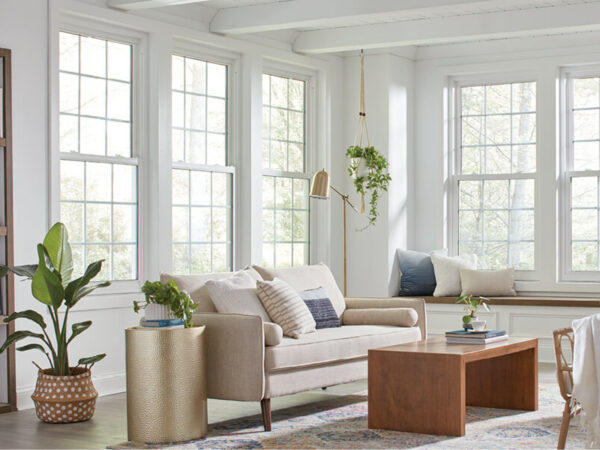Double & Single Hung
A double or single hung windows is vertical sliding window with movable sash(es), counterbalanced by weights or springs for ventilation.
Overview
Double and single hung windows are staples in traditional window design. Both types consist of two sashes, which are the framework that holds the window panes. The main difference lies in their operation: the single hung window has a stationary top sash and a movable bottom sash, while the double hung window allows both the top and bottom sashes to move. This dual movement capability enhances the double hung window’s versatility.Key Benefits
- Ventilation: Double hung windows excel in ventilation control. They allow the user to adjust both the top and bottom sashes independently, facilitating precise airflow management. This feature is particularly beneficial in rooms like kitchens and bathrooms where airflow can help clear out steam or smoke.
- Safety: For households with children, the ability to open just the top sash of double hung windows minimizes the risk of accidents, as it prevents children from climbing out while still letting fresh air into the room.
- Maintenance: Modern double hung windows are designed to tilt inward, simplifying the cleaning process. This is especially useful for windows in hard-to-reach places, such as those on higher floors.
- Space Efficiency: Both window styles are designed to stay flush with the wall, either opening vertically or remaining stationary. This design is ideal for locations with limited space, like beside walkways or on patios, as it does not obstruct the area.
- Aesthetic and Efficiency: While they maintain a classic appearance, these windows can be outfitted with contemporary features such as energy-efficient glass or gas-filled panes that enhance insulation, combining traditional style with modern performance.
Ideal Applications
- Bedrooms: The adjustable sashes of double hung windows allow for controlled ventilation and privacy, making them perfect for bedrooms.
- Bathrooms: In upper floor bathrooms, these windows can be opened from the top to let out steam while maintaining privacy.
- Kitchens: The flexibility in airflow adjustment is ideal for quickly venting out smoke or odors.
- Hallways and Stairwells: Their non-protruding design ensures light entry without taking up valuable space or obstructing pathways.

